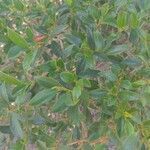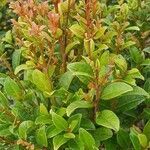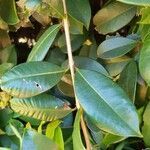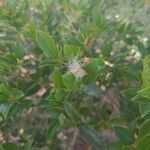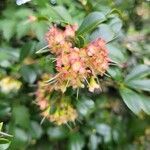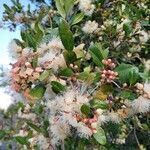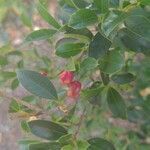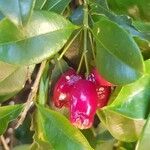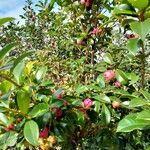Tree 6–15 m tall with grey bark.. Leaves somewhat discolorous, elliptic to oblanceolate, 2.5–6 cm long, 1.3–2.7 cm wide, rounded to shortly acute at the apex, cuneate at the base; lateral nerves ± 30 on each side, prominent on both sides; petiole 3–5 mm long.. Flowers few in terminal dichasia; pedicels 1–15 mm long.. Calyx green with lobes tipped red but later all red; tube narrowly obconic, 5 mm long; lobes ± oblong, 3 mm long, 2.7 mm wide.. Petals white, round, 4 mm long and wide.. Stamens white, 6–8 mm long.. Style 1.3 cm long.. Fruit pink or carmine-red, ovoid, 1.3–1.5 cm long, 0.8–1 cm wide, fleshy, not eaten.
